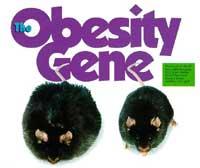Obesity XXI. Obsession of the twentieth century
It seems a lie, that it is not long, our parents and, of course, our grandparents knew the hunger; today, the hunger among us does not generate problems, the obesity more and more.

Obesity is the direct cause of numerous chronic diseases. Diabetes, heart disease, many types of cancer… are the result of eating too much and badly. However, identification of obesity = insomnia cannot be made so clear. Behind obesity, the scarcity of vitamins and minerals is often hidden. Thus, experts say that obesity should be as careful as food shortages.
A few years ago it was impossible to say so. When hunger kills millions of people, how can we care for obesity? In the world there are 815 million hungry people, 780 of them in developing countries. According to data from last year, the number of people hungry in the world is similar to that of people with obesity problems. Many of them are, moreover, inhabitants of the developing countries and of the countries in which there is hunger. In China, for example, the percentage of people with obesity has gone from 10% to 15% in three years. In Brazil and Colombia the obese represent 40% of the population, as in other European countries. In sub-Saharan Africa, where the hungry majorities live, the number of obese also increases, especially among the women of the cities.
The appearance of obesity in developing countries is no surprise, since the earth provides enough food to meet the needs of all, although food does not reach those who need it most. Hunger is one of the consequences, the other is obesity. Both those who are hungry and many with obesity problems have a lack of vitamins and minerals. The latter eat a lot of food but are scarce, that is, they manage to fill the stomach, but the body is not made with the food it needs. One of the most common consequences of this situation is anemia due to lack of iron and blindness due to lack of vitamin A.
Why increase obesity?

In developing countries, obesity can be considered the result of the transformation of food, physical exercise, health and nutrition. In short, obesity can be due to a nutritional transition. The poor countries, as they develop, discover the benefits of the rich countries, the benefits and the problems, including obesity.
In developing countries, in most cases, urban nuclei advance faster than rural nuclei, with which the rates of obesity are also higher. In fact, in the cities there are more and cheaper feeding options. More and more women are working outside the home and no one begins to buy and cook healthy foods. Urban works are often of little physical effort. To this we must add that more and more people live in the cities. In 1900, 10% of the world's population lived in cities, compared to 50% today. All of the above does not mean that there are no problems of obesity in rural areas. In these areas, the machines have also arrived, and the variety of foods is increasingly wide.
Another cause of the increase in obesity is the importation of foods from developed countries to third parties. Consequently, traditional food based on vegetables and cereals is replaced by an enriching diet in fat and sugar. Some of those who know in terms of food say that advanced countries sell to developing countries the worst meat, with a lot of fat and little muscle mass: turkey txuntxo or sheep wing meat.
Globalization has transformed the typical meaning of obesity. In Mexico and Brazil, for example, the link Persona Gruesa = Persona Rica has been very common; today it happens backwards. The cheapest foods, more accessible to the poor, are the foods with more fat, while the richest have more chances to feed and can make a healthier diet.
Consequences of bad food

These situations are causing similar health problems among the thickest and the thinnest: they become sick more often, have more disability problems, live less years and, in general, have less productivity. Obesity increases the risk of chronic diseases. Do you want any example? Diabetes, hypertension, heart disease, vascular problems, bile disease, many types of cancer… And it all points to the fact that most of them will occur in developing countries. For example, experts believe that by 2025 the number of people affected by obesity and diabetes will reach 300 million, of which 225 will be from developing countries. Compliance with these forecasts in countries that already have many survival problems could lead to a catastrophe.
Why do we get fat?
The causes of obesity are not very clear, but experts believe that genetics, the influence of the environment, and sedentary life have much to do with.

Those who work in the field of genetics already know the gene of obesity, but do not believe that on one occasion it is sufficient to provoke obesity, that is, the increase of the amount of fat. For this purpose, the collaboration of the environment is essential. For many years, ties such as slender = sick, obese = healthy, probably as a legacy of times of hunger, poverty and disease have been established. These messages from the ancestors have brought with them a tendency to cope with food for children and therefore it is possible that obesity prevails among children. Of course, many of those who grow up in childhood are still fat. Proper education in eating habits is very important, since in maturity these habits do not change.
The ties are no longer so clean but have not completely disappeared: the fat child is still a handsome child.
On the other hand, it is clear that modern society is sedentary. The use of the lift, the fact of having a remote control to change the channels of the television, or the fact of having gas to the kitchen, for example, has meant the non-performance of physical activity, unless it is something previously programmed. Therefore, since man spends less and less energy, obesity has increased.

In addition to general circumstances, there are more concrete reasons that can be a cause of obesity:
- Diseases. Cushing syndrome, hypothyroidism, Carpenter syndrome, bulimia can be the direct cause of obesity.
- Medications: Medications: Glucocorticoids, antidepressants, and contraceptives cause a weight gain.
- Pregnancy : In the abdominal period frequent hormonal and psychic changes occur. As a consequence, many times it is eaten more than normal and it is possible that after pregnancy the eating habits are changed. The same can occur during breastfeeding.
- Quitting of tobacco: When you quit smoking you can earn between 3 and 10 kilos. Nicotine decreases the feeling of hunger and secretes adrenaline. Therefore, smokers eat less. In addition, the abandonment of tobacco generates a state of anxiety that makes many replace tobacco with food.
- Postoperative : In these cases it is recommended to remain standing many times, so it can increase the weight.
A vaccine against obesity?

Adipose tissue flows, among other things, a hormone called leptin. The fluctuations that occur in this hormone appear to be related to a quarter of the cases of obesity that occur in the world. Based on this hypothesis, researchers from the Physiology and Nutrition laboratory of the University of Navarra have found that one of the antibodies of the hormone leptin affects body weight.
The research process has been complex. They first gave leptin to thick rats that they could not create by themselves. Logically, before it reacted the bodies of the rats, created the antibodies of the anticueptin. These antibodies were taken and given to normal rats. The new antibodies were reused with rats and at that time the researchers realized the anti-obesity characteristics of leptin.
If things go their way, the researchers of the University of Navarra will get the treatment that the obese will have to take periodically.
What we eat and drink
Fruit, cereals and coffee with milk for breakfast with bread; chickpeas, fish and rice with milk in meals, soaked with water; some fruit at snack; and dinner salad, soup, tortilla and cheese accompanied by Rioja wine. So are the foods of the day, which we eat and drink, but can also be said differently.

Carbohydrates, fats, proteins, vitamins, minerals and water. All this can be found in food and we need all of that to live. The lack of one of them becomes a disease. Each of them has its role and function.
- Carbohydrates or sugar. They provide energy to the body. The 50-60% of the energy obtained in balanced diets comes from carbohydrates. The body quickly absorbs simple carbohydrates, such as sugar, while the compound, such as legumes, takes longer to absorb itself.
- Lipids or fats. They have many functions, but the most noteworthy are the formation of cell membranes, the synthesis of hormones and their conversion into energy reserves. As for saturation, saturated and unsaturated fats are distinguished. Saturated fats are mainly found in animal fats and are those related to cholesterol. Butter, margarine, pastry products, biscuits, viscera, red meat, eggs and seafood, for example, are rich in saturated fats. Unsaturated fats are found in vegetable fats. Olive oils, sunflower, corn and soybeans can be part of this group. This type of fat does not contain cholesterol.
- Proteins. They differ between structural and metabolic. The structural ones are proteins that form muscles, skin, hair and nails. In metabolic proteins there are hormones, enzymes that cause chemical reactions, gammaglobulins that are part of the body defense mechanism, albumin that form the blood and hemoglobin. The main source of proteins are meat, fish, eggs, cereals, legumes and nuts.
- Vitamins. They are substances that the body cannot form by itself and that intervene in numerous chemical reactions. They do not provide energy to the body, so they do not generate weight gain.

- Minerals. Inorganic substances that play an important role in the functioning and formation of the body.
- Water. Liquid without colors, odors or tastes, formed by oxygen and hydrogen. Without water we could not live. The human being is also water for the most part: at birth about 80%, when it matured between 60-65% and in old age 55%.
- Sugary drinks. The lemon and orange juice, the tonic... do not have much nutritional value, but they do have water.
- Alcoholic beverages. From the nutritional point of view, only calories can be mentioned. Depending on the amount of alcohol and sugar in the drink, they provide more or less calories.
- Milk. First food for mammals. As age advances, and if calcium is obtained elsewhere, it is not necessary to drink milk. Rich in proteins, fats, minerals, vitamins, etc.
Proteins Proteins Proteins
| Nº nºN.N.N.N.C., N.C., N.C. | Source: Source: Source | Nº nºN.N.N.N.C., N.C., N.C. |
100 gr | Beef of cow | 19 gr of protein |
100 gr | Horse meat | 21 g of protein. |
100 gr | Pork loin | 15 gr. Of proteins. |
100 gr | Ham ham | 19 gr. Of proteins. |
100 gr | Hake in Hake | 15 gr. Of proteins. |
100 gr | Rice Rice Rice Rice | 7 gr. Of proteins. |
100 gr | Bread Bread Bread Bread | 9 gr. Of proteins. |
100 gr | Spinach spinach spinach | 3 gr. Of proteins. |
100 gr | Chickpeas Chickpeas Chickpeas Chickpeas | 20 gr. Of proteins. |
100 gr | Cheese cheese cheese cheese cheese | 27 gr. Of proteins. |
Vitamins and vitamins Vitamins Vitamins
- Vitamin A: Milk and dairy products, egg, carrots, spinach, lettuce, tomato and parsley.
- Vitamin B: Meat, rice, wheat, milk, vegetables, legumes, cereals, fish, milk and liver.
- Vitamin C : Vegetables and fruit.
- Vitamin D: Milk and dairy products, eggs and sunlight.
- Vitamin E : Egg, cereals and fat.
- Vitamin K : Cod liver, cabbage, spinach and tomato.
Obese or obese?

If at first glance you need what seems obese will not be obese, but fat, big, nice… Because not all obese are obese. Do you know what sets them apart?
Obesity is a chronic disease caused by excess body fat, the most common metabolic disorder in modern societies. Fluid retention is often confused with obesity, but they are completely different. In fact, the weight for fluid retention is rare. This may be due to heart, kidney, or liver failure, but in these cases you can't talk about obesity, since it occurs when the amount of fat increases and not when the amount of water increases.
In some cases, despite its high weight, there is no obesity. This occurs, for example, with those who practice body building, which despite their weight and low fat content, have very developed their muscle mass.
Is it obese to be fat? More than one can ask. It does not have to be. In fact, to talk about obesity, several systems are used. One of the most used is the body mass index. For the calculation of this index only the following simple formula is required: Index = weight in kilos / square of height. For example, the body mass index of a person of 60 kilos and 1.7 meters in height is: 60 / 1,7x1.7 = 60 / 2,89 = 20,7. In the evaluation of the index, the classification is performed as follows:
- 20, low weight.
- 20-25 normal.
- 25,1-26,9, low obesity.
- 27-29,9, primary obesity.
- 30-34,9, secondary obesity.
- 35-39,9, third degree of obesity.
- 40, fourth degree obesity, morbid.

Another system of classification of obesity is the distribution of fat. Knowing where fat accumulates can be very important to deduce which problems can cause obesity. To know the type of obesity it is necessary to divide the perimeter of the waist by the perimeter of the hip. If the result of this operation is greater than 0.9 in the case of women and 1 in the case of men, there is talk of ventral obesity and when it is inferior there is talk of peripheral obesity.
Abdominal obesity refers to bodies in the form of an apple. Most of the fat accumulates in the face, chest, and belly. According to experts, diabetes and cardiovascular insufficiency are the most common consequences of this type of obesity. Apple to reflect abdominal obesity and pear to give image of peripheral obesity. Those who have this type of obesity are accumulated fat mainly in the hip and in the thighs. Varicose veins, osteoarthritis of the knees, and problems of the lower extremities, are not usually strange among those who present this type of obesity. Finally, to finish with the fruit beads, we must mention the melon, which is the fat that accumulates in a homogeneous way throughout the body, characteristic of homogeneous obesity.
Published in section D2 of Deia.
Buletina
Bidali zure helbide elektronikoa eta jaso asteroko buletina zure sarrera-ontzian











